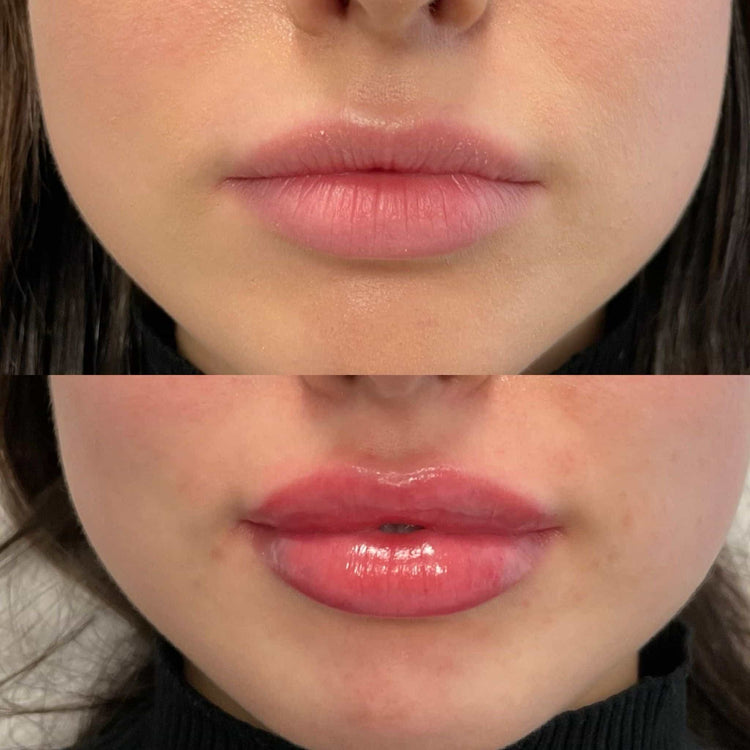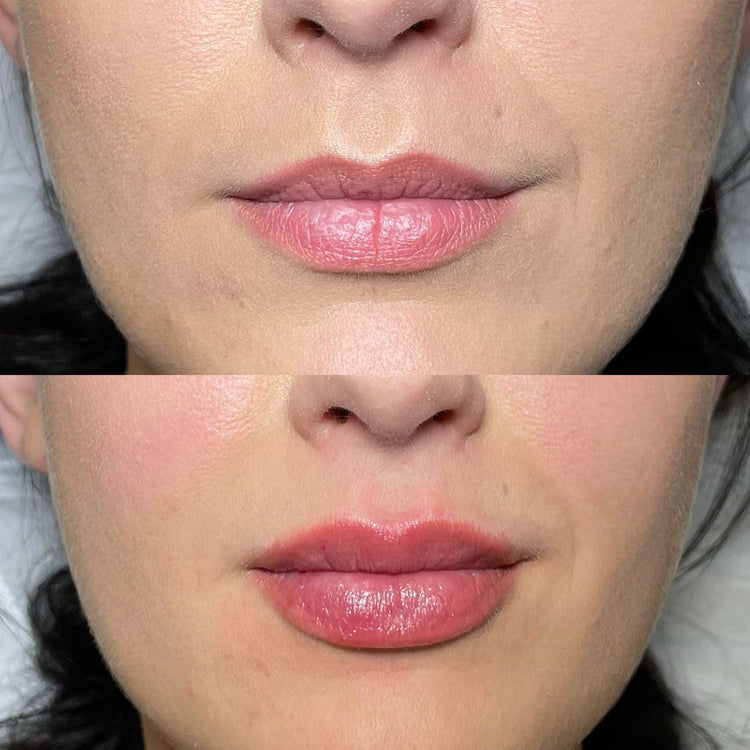How To Achieve A Natural Look With Dermal Fillers
Choosing the Right Filler
Achieving a natural and youthful appearance through dermal fillers involves selecting the right type of filler for your specific needs. Understanding the different types of fillers, their properties, and how they interact with various facial areas is crucial for achieving optimal results.
Consultation and Assessment
Choosing the right filler is paramount to achieving a natural look. A consultation and thorough assessment are essential steps in this process.
- During the consultation, a qualified practitioner will evaluate your facial anatomy, discuss your desired outcomes, and consider factors such as skin type, lifestyle, and any pre-existing medical conditions.
- Based on this assessment, they will recommend the most suitable filler type for addressing your specific concerns.
Different fillers have varying consistencies, compositions, and longevity, making them suitable for different applications.
Filler Type Selection
Understanding the diverse range of dermal fillers available is key to achieving a natural-looking outcome.
Fillers are categorized based on their composition: hyaluronic acid (HA) based and non-HA based. HA fillers are the most common, renowned for their ability to attract and retain moisture, providing volume and hydration.
Non-HA fillers, often composed of poly-L-lactic acid (PLLA), stimulate collagen production, offering a longer-lasting volumizing effect.
Placement Techniques
Placement techniques play a crucial role in achieving a natural appearance with dermal fillers. The skill and expertise of the practitioner are essential in strategically injecting the filler to enhance facial features without creating an artificial or overfilled look.
Facial Anatomy Understanding
Understanding the underlying facial anatomy is fundamental for successful placement of dermal fillers. Each area of the face has distinct muscle structures, fat pads, and bone contours that influence how fillers interact with the skin.
A practitioner with a deep understanding of facial anatomy can precisely target specific areas to address concerns such as volume loss, wrinkles, or asymmetry.
For example, cheek augmentation often involves injecting filler into the midface to restore lost volume and create a more youthful appearance.
Similarly, lip augmentation requires careful placement of filler in the vermillion border and cupid’s bow to enhance lip shape and fullness while maintaining a natural look.
Practitioners utilize various techniques like linear threading or fanning to distribute filler evenly and achieve a smooth, integrated result.
Subtle Injection Methods
Subtle injection methods are essential for achieving a natural appearance with dermal fillers. These techniques involve precise placement of the filler in small increments, gradually building volume and enhancing facial contours.
One such method is known as “micro-droplet injection,” where very small amounts of filler are injected superficially to create subtle lift and smoothing of fine lines. This technique minimizes the risk of overfilling and allows for gradual refinement.
Another approach is “layering,” which involves injecting multiple layers of filler at varying depths to achieve a more natural and dimensional effect. By layering different types of fillers with varying consistencies, practitioners can target specific areas and create a customized look.
Careful attention to needle angle and depth is crucial in subtle injection methods. Injecting too deeply can lead to lumps or uneven results, while injecting too superficially may not provide adequate volume or lift.
Product Selection Considerations
Selecting the right dermal filler is paramount for achieving a natural-looking outcome. A thorough consultation with a qualified practitioner is essential to determine the most suitable type of filler based on individual needs and goals.
Dermal Filler Viscosity
Dermal fillers come in various viscosities, ranging from very light and fluid to thicker gels. This viscosity directly impacts how the filler behaves under the skin and its suitability for different applications.
Lighter-weight fillers are ideal for smoothing fine lines, wrinkles around the eyes (crow’s feet), or adding subtle volume to areas like the lips or cheeks.
Thicker fillers are better suited for addressing deeper wrinkles, restoring lost facial volume in areas like the cheeks, jawline, or chin, and augmenting larger structures.
Hyaluronic Acid Content
The viscosity of a hyaluronic acid (HA) filler is a crucial consideration when aiming for natural-looking results.
- Light-weight HA fillers are excellent for fine lines and wrinkles around the eyes (crow’s feet). Their subtle volumizing effect can enhance these areas without creating a “overdone” appearance.
- For deeper wrinkles or more significant volume loss, thicker HA fillers provide a more robust solution.

It’s important to remember that the ideal viscosity will vary depending on the specific area being treated and the desired outcome. Consulting with a qualified practitioner will help determine the best viscosity for your individual needs.
Cross-linking Properties
Cross-linking properties of dermal fillers are essential in determining their longevity, firmness, and ability to maintain volume over time.
Hyaluronic acid (HA) fillers undergo cross-linking to increase their stability and duration.
The degree of cross-linking affects the filler’s consistency and how long it lasts under the skin.
Highly cross-linked fillers tend to be firmer and last longer, while less cross-linked fillers are softer and may have a shorter lifespan.
Professional Expertise Matters
Achieving a natural look with dermal fillers requires a thorough understanding of filler types, their properties, and expert application techniques.
Experience and Qualifications
Professional expertise is paramount in achieving natural-looking results with dermal fillers. A qualified practitioner possesses the knowledge and experience to select the appropriate filler type, assess facial anatomy, and implement precise injection techniques.
Understanding the various types of fillers, their viscosities, and cross-linking properties allows practitioners to customize treatments based on individual needs and desired outcomes.
Experience plays a crucial role in mastering subtle injection methods, ensuring that filler is distributed evenly and delicately for a harmonious and natural appearance.
Communication and Consultation
Achieving a natural and youthful appearance through dermal fillers involves selecting the right type of filler for your specific needs. Understanding the different types of fillers, their properties, and how they interact with various facial areas is crucial for achieving optimal results.
Choosing the right filler is paramount to achieving a natural look. A consultation and thorough assessment are essential steps in this process.
During the consultation, a qualified practitioner will evaluate your facial anatomy, discuss your desired outcomes, and consider factors such as skin type, lifestyle, and any pre-existing medical conditions. Based on this assessment, they will recommend the most suitable filler type for addressing your specific concerns.
Different fillers have varying consistencies, compositions, and longevity, making them suitable for different applications.
Understanding the diverse range of dermal fillers available is key to achieving a natural-looking outcome. Fillers are categorized based on their composition: hyaluronic acid (HA) based and non-HA based. HA fillers are the most common, renowned for their ability to attract and retain moisture, providing volume and hydration.
Non-HA fillers, often composed of poly-L-lactic acid (PLLA), stimulate collagen production, offering a longer-lasting volumizing effect.
Placement techniques play a crucial role in achieving a natural appearance with dermal fillers. The skill and expertise of the practitioner are essential in strategically injecting the filler to enhance facial features without creating an artificial or overfilled look.
Understanding the underlying facial anatomy is fundamental for successful placement of dermal fillers. Each area of the face has distinct muscle structures, fat pads, and bone contours that influence how fillers interact with the skin. A practitioner with a deep understanding of facial anatomy can precisely target specific areas to address concerns such as volume loss, wrinkles, or asymmetry.
For example, cheek augmentation often involves injecting filler into the midface to restore lost volume and create a more youthful appearance. Similarly, lip augmentation requires careful placement of filler in the vermillion border and cupid’s bow to enhance lip shape and fullness while maintaining a natural look.
Practitioners utilize various techniques like linear threading or fanning to distribute filler evenly and achieve a smooth, integrated result.

Subtle injection methods are essential for achieving a natural appearance with dermal fillers. These techniques involve precise placement of the filler in small increments, gradually building volume and enhancing facial contours.
One such method is known as “micro-droplet injection,” where very small amounts of filler are injected superficially to create subtle lift and smoothing of fine lines. This technique minimizes the risk of overfilling and allows for gradual refinement.
Another approach is “layering,” which involves injecting multiple layers of filler at varying depths to achieve a more natural and dimensional effect. By layering different types of fillers with varying consistencies, practitioners can target specific areas and create a customized look.
Careful attention to needle angle and depth is crucial in subtle injection methods. Injecting too deeply can lead to lumps or uneven results, while injecting too superficially may not provide adequate volume or lift.
Selecting the right dermal filler is paramount for achieving a natural-looking outcome. A thorough consultation with a qualified practitioner is essential to determine the most suitable type of filler based on individual needs and goals.
Dermal fillers come in various viscosities, ranging from very light and fluid to thicker gels. This viscosity directly impacts how the filler behaves under the skin and its suitability for different applications.
Lighter-weight fillers are ideal for smoothing fine lines, wrinkles around the eyes (crow’s feet), or adding subtle volume to areas like the lips or cheeks.
Thicker fillers are better suited for addressing deeper wrinkles, restoring lost facial volume in areas like the cheeks, jawline, or chin, and augmenting larger structures.
The viscosity of a hyaluronic acid (HA) filler is a crucial consideration when aiming for natural-looking results. Light-weight HA fillers are excellent for fine lines and wrinkles around the eyes (crow’s feet). Their subtle volumizing effect can enhance these areas without creating a “overdone” appearance.
For deeper wrinkles or more significant volume loss, thicker HA fillers provide a more robust solution.
It’s important to remember that the ideal viscosity will vary depending on the specific area being treated and the desired outcome. Consulting with a qualified practitioner will help determine the best viscosity for your individual needs.
Cross-linking properties of dermal fillers are essential in determining their longevity, firmness, and ability to maintain volume over time.
Hyaluronic acid (HA) fillers undergo cross-linking to increase their stability and duration.
The degree of cross-linking affects the filler’s consistency and how long it lasts under the skin.
Highly cross-linked fillers tend to be firmer and last longer, while less cross-linked fillers are softer and may have a shorter lifespan.
Achieving a natural look with dermal fillers requires a thorough understanding of filler types, their properties, and expert application techniques.
Professional expertise is paramount in achieving natural-looking results with dermal fillers. A qualified practitioner possesses the knowledge and experience to select the appropriate filler type, assess facial anatomy, and implement precise injection techniques.
Understanding the various types of fillers, their viscosities, and cross-linking properties allows practitioners to customize treatments based on individual needs and desired outcomes.
Experience plays a crucial role in mastering subtle injection methods, ensuring that filler is distributed evenly and delicately for a harmonious and natural appearance.
Enquire about dermal fillers for a more youthful appearance at It’s Me & You Clinic
- How To Choose The Right CBD Vape Pen For Sleep And Relaxation - September 7, 2025
- Bernhard Langer Quotes - September 6, 2025
- How To Avoid Overfilled Results With Marionette Line Fillers In Surrey - September 4, 2025
Author
Related Posts
How Often Should You Get Dermal Fillers In The UK?
Factors Affecting Filler Frequency Determining the ideal frequency for dermal filler treatments is a highly individualized process, influenced by several key factors....
Read out allHow Much Is 1 Syringe Of Filler?
Secure Your Dermal Filler Appointment with Dr. Laura Geige The cost of filler by volume can vary significantly depending on several factors...
Read out allHow Long After Tear Trough Filler Take To Settle
Get Started with Dermal Fillers – Consult Dr. Laura Geige Duration of Tear Trough Filler Settlement The Duration of *Tear Trough Filler...
Read out allHow Can You Tell If Lip Filler Has Migrated
Reserve a Dermal Filler Session with Dr. Laura Geige Now Understanding Lip Filler Migration Symptoms Lip filler migration, also known as lip...
Read out allDoes Lip Filler Ever Look Natural?
Schedule a Dermal Filler Consultation with Dr. Laura Geige Today Understanding the Science Behind Lip Filler The process of lip filler involves...
Read out allDo Lip Fillers Look Weird At First?
Arrange Your Dermal Filler Session with Dr. Laura Geige Immediate Results May Not Be What You Expect “Immediate results may not be...
Read out all